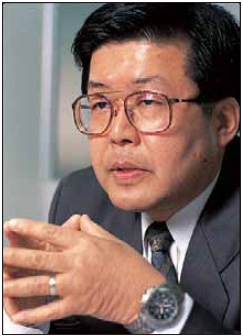imported post
Based on what I have read, cost isthe only reason that Seiko selected Hardlex.This is based on comments made by Ikuo Tokunaga, Seiko's chief dive watch designer -- the guy who made the decision to use Hardlex crystals in Seiko dive watches. He stated that AT NO POINT has Seiko ever denied that at the same thickness, sapphire crystals are superior to Hardlex, even for dive watches. Tokunaga clearly stated that the decision to go with Hardlex is purely based on whether the company thought the added cost (which would be passed onto customers) justified the incremental improvement in performance. While Seiko decided that the answer to this question was "NO," because the company likes to focus on value-for-money, the company clearly did believe there IS a performance increase. In other words, if costs HAD been equal, Seiko would have gone with sapphire, too.
http://www.thewatchsite.com/index.php?topic=273.0
As a side note, Seiko makes their own sapphire crystals.
The company found that when sapphire and Hardlex are of equal thickness, sapphire is superior in BOTH impact resistance and scratch resistance.
However, to make sapphire crystals of sufficient thickness for their dive watches (e.g., the same thickness as the Hardlex crystals currently being used), the failure rate (some crystals apparently come out with hidden/microscopic cracks that affect impact resistance and thus need to be discarded) makes them too expensive (in Seiko's opinion) to justify the incremental improvement in performance. Which is why Hardlex is used for all but the most expensive of Seiko's dive watch line (and the MM300 is NOT one of these models, which is why it still has Hardlex.)
http://www.thewatchsite.com/index.php?topic=273.0
This explains why Seiko does routinely use sapphire crystals in many of its mid-priced non-dive (dress, chronograph, etc.) watches. For a non-dive watch, a thinner (and thus cheaper) sapphire crystal can be used since impact resistance is less critical.
Based on what I have read, cost isthe only reason that Seiko selected Hardlex.This is based on comments made by Ikuo Tokunaga, Seiko's chief dive watch designer -- the guy who made the decision to use Hardlex crystals in Seiko dive watches. He stated that AT NO POINT has Seiko ever denied that at the same thickness, sapphire crystals are superior to Hardlex, even for dive watches. Tokunaga clearly stated that the decision to go with Hardlex is purely based on whether the company thought the added cost (which would be passed onto customers) justified the incremental improvement in performance. While Seiko decided that the answer to this question was "NO," because the company likes to focus on value-for-money, the company clearly did believe there IS a performance increase. In other words, if costs HAD been equal, Seiko would have gone with sapphire, too.
http://www.thewatchsite.com/index.php?topic=273.0
As a side note, Seiko makes their own sapphire crystals.
The company found that when sapphire and Hardlex are of equal thickness, sapphire is superior in BOTH impact resistance and scratch resistance.
However, to make sapphire crystals of sufficient thickness for their dive watches (e.g., the same thickness as the Hardlex crystals currently being used), the failure rate (some crystals apparently come out with hidden/microscopic cracks that affect impact resistance and thus need to be discarded) makes them too expensive (in Seiko's opinion) to justify the incremental improvement in performance. Which is why Hardlex is used for all but the most expensive of Seiko's dive watch line (and the MM300 is NOT one of these models, which is why it still has Hardlex.)
http://www.thewatchsite.com/index.php?topic=273.0
This explains why Seiko does routinely use sapphire crystals in many of its mid-priced non-dive (dress, chronograph, etc.) watches. For a non-dive watch, a thinner (and thus cheaper) sapphire crystal can be used since impact resistance is less critical.








